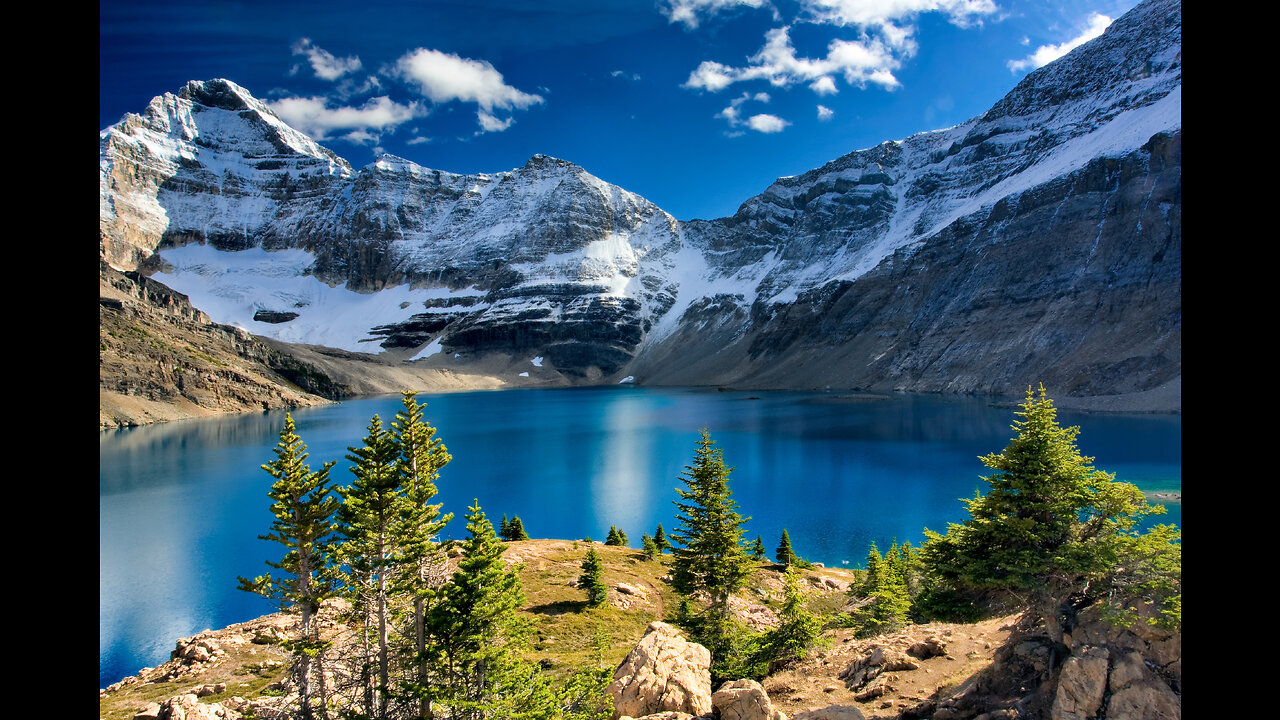Premium Only Content

Mountains and its relaxing music #22
The reality of mountains encompasses both their captivating beauty and the harsh realities that come with their existence. While they are often romanticized as serene and peaceful, mountains also present challenges and dangers that need to be acknowledged. Here is a description of the reality of mountains:
Harsh and Unforgiving Terrain: Mountains are characterized by their rugged terrain, with steep slopes, jagged peaks, and treacherous cliffs. Navigating through mountainous landscapes can be physically demanding and mentally taxing. The unforgiving nature of mountains requires careful planning, endurance, and respect for the environment.
Extreme Weather Conditions: Mountains are known for their rapidly changing and extreme weather conditions. Altitude, coupled with variations in temperature and air pressure, can lead to intense storms, blizzards, high winds, and sudden drops in temperature. These weather phenomena can pose significant risks to mountaineers, hikers, and other adventurers.
Altitude Sickness and Oxygen Deprivation: As elevation increases, the air becomes thinner, resulting in decreased oxygen levels. Altitude sickness can affect individuals who ascend too quickly, causing symptoms such as headaches, nausea, dizziness, and fatigue. Proper acclimatization is crucial to mitigate the effects of altitude on the human body.
Remote and Isolated Environments: Mountains are often remote and isolated, far from populated areas and infrastructure. This remoteness poses challenges in terms of accessibility, communication, and emergency response. Rescues in mountainous terrain can be difficult and time-consuming, requiring specialized skills and resources.
Fragile Ecosystems: Mountain ecosystems are delicate and vulnerable to human activities and climate change. The fragile balance of flora and fauna in these habitats can be disrupted by uncontrolled tourism, deforestation, pollution, and invasive species. It is crucial to practice responsible and sustainable behavior to preserve mountain environments.
Avalanches and Rockfalls: Mountains are prone to natural hazards such as avalanches and rockfalls, which can occur with little warning. These events can be triggered by weather conditions, seismic activity, or human disturbances. Mountaineers and climbers must be aware of the potential risks and take precautions to minimize their exposure to such hazards.
Cultural and Socioeconomic Realities: Mountains are often home to diverse communities with unique cultures and ways of life. These communities face distinct challenges related to limited access to resources, economic opportunities, and basic services. Sustainable development practices are necessary to support mountain communities and maintain their cultural heritage.
Symbolic and Spiritual Significance: Mountains hold deep symbolic and spiritual significance for many cultures around the world. They are often associated with transcendence, enlightenment, and a connection to the divine. Mountains can evoke a sense of awe and inspire introspection and contemplation.
Recreation and Tourism: Mountains attract millions of visitors each year, seeking adventure, recreation, and the beauty of nature. This influx of tourism can bring economic benefits to local communities, but it also poses the risk of overcrowding, environmental degradation, and cultural disruption. Balancing tourism with conservation efforts is crucial to ensure the long-term sustainability of mountain regions.
Understanding the reality of mountains involves acknowledging both their allure and the challenges they present. By embracing responsible and respectful practices, we can appreciate and enjoy these natural wonders while preserving their inherent beauty for future generations.
-
 1:42:59
1:42:59
Game On!
14 hours ago $3.53 earnedTop 10 Super Bowl Bets You Can't Afford To Miss!
23.3K4 -
 2:17:02
2:17:02
Tundra Tactical
19 hours ago $15.57 earnedTundra Nation Live : Shawn Of S2 Armament Joins The Boys
104K19 -
 11:00:11
11:00:11
tacetmort3m
1 day ago🔴 LIVE - SOLO RANK GRINDING CONTINUES - MARVEL RIVALS
169K3 -
![Shadows Of Chroma Tower, Alpha Playtest [Part 1]](https://1a-1791.com/video/fwe2/1d/s8/1/5/Q/U/n/5QUnx.0kob-small-Shadows-Of-Chroma-Tower-Alp.jpg) 13:29:21
13:29:21
iViperKing
22 hours agoShadows Of Chroma Tower, Alpha Playtest [Part 1]
141K6 -
 54:05
54:05
TheGetCanceledPodcast
19 hours ago $13.40 earnedThe GCP Ep.11 | Smack White Talks Smack DVD Vs WorldStar, Battle Rap, Universal Hood Pass & More...
129K20 -
 13:37
13:37
Exploring With Nug
23 hours ago $8.78 earnedSUV Found Underwater Searching For Missing Man Jerry Wilkins!
88.8K4 -
 2:58:21
2:58:21
xBuRnTx
18 hours ago1st Warzone Stream Online
104K11 -
 6:10:21
6:10:21
JdaDelete
1 day ago $23.38 earnedDino Crisis - Sega Saturday
165K6 -
 23:22
23:22
MYLUNCHBREAK CHANNEL PAGE
1 day agoUnder The Necropolis - Pt 5
128K62 -
 2:26:11
2:26:11
Jewels Jones Live ®
2 days agoWINNING BIGLY | A Political Rendezvous - Ep. 108
178K51